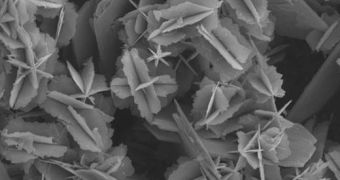At this point in time, the basis of nanomedicine is placed on tiny, small-scale structures, which are constructed in such a way that they target a specific chemical that a certain group of cells emits. The ultimate goal is to make the nanoparticles zoom in on the disease cells and then penetrate them. The nanostructures would then be laden with vaccines and other beneficial molecules, which could be used to destroy the infected cells from within. But this approach at building nanoparticles is not the most precise one, so researchers want to see it replaced once and for all.
“Everything in nanomedicine right now is hit-and-miss as far as the biological fate of nanoparticles. There's no systematic understanding of how to design a particle to accomplish a certain goal in terms of where it goes in a cell or if it even goes into a cell,” Jennifer West, a bioengineering researcher at the Rice University, in the United States, says. The expert's lab is involved alongside 11 others in fixing these issues. The group, which also includes three labs at Rice's BioScience Research Collaborative, is funded under an American Recovery and Reinvestment Act (ARRA)-enabled Grand Opportunity (GO) grant. The money came from the US National Institutes of Health (NIH).
Using data snapped with a microscope every few seconds, the Rice scientists demonstrate that one of the most important things about nanoparticles today is their size. In a video containing a large number of various nanoparticles, experts can clearly see that size is far more important than shape and the original material.
“These are made of the same material and have the same chemistry. They are just different sizes. Yet you can see the profound differences in how they are moving in the cell. As we start to explore out further in the range of sizes and in altering the chemistry of the particles, we think we're likely to see even bigger impacts on where things go inside the cell,” West, who is also the university's Isabel C. Cameron professor and the department chair of Bioengineering, says.
The main goal of the new research is to produce a database that charts the expected response of particles of a given size, type and chemistry, inside a living cell, the experts say. It is estimated that the work will go on for at least two years, the investigators add.
“We want to understand where the particles go inside the cell, what organelles they associate with, whether or not they associate with any of the cytoskeletal structures and how they move inside the cell. For different applications, you're going to want your particles going to different places. We need to know where they go and how they behave so we can design the right particle for a particular job,” Rice GO grant investigator Junghae Suh says.
The project’s other principal investigators include Rebekah Drezek and Lon Wilson, both of Rice; Mauro Ferrari, Paolo Decuzzi, David Gorenstein, Jim Klostergaard, Chun Li, Gabriel Lopez-Berestein and Anil Sood, all of the University of Texas Health Science Center in Houston, and Wah Chiu of Baylor College of Medicine. “We are thrilled to get the opportunity to really join forces to study this. It's just the sort of problem that requires the kind of support NIH is providing with ARRA funding. It's a problem that really requires a multidisciplinary, interinstitutional approach,” Suh adds.

 14 DAY TRIAL //
14 DAY TRIAL //